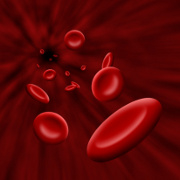Most of us have been witness to a playground injury – split lip – bloody nose – or head gash – at some point in our lives. We’ve all held a child, gently applied pressure and reassured them that despite the amount of blood flowing from their head, they were in fact not as seriously injured as they thought and were not bleeding to death.
For most of us, applying simple pressure is enough to allow the cut or gash time to clot bad the bleeding to sop. However, for those who suffer from hemophilia, this is not the case.
What is hemophilia?
Hemophilia is a rare blood disorder which prevents the blood from clotting (change from liquid to solid) properly. Hemophiliacs either lack or have low levels of essential proteins (clotting factors) that work with your platelets to cause blood clotting to occur. As a result, it takes hemophiliacs longer than it would you or I to stop bleeding after a “routine” injury such as a simple fall on playground. Hemophiliacs are also more prone to internal bleeding and even a simple scrape could be potentially life threatening.
What causes it?
Approximately two percent of the population in the United States suffers from hemophilia. Hemophilia is considered to be a genetic disorder and is generally inherited from one of the parents. However, in about one-third of all cases, there is no family history of hemophilia. In these instances, it is believed that the gene which causes hemophilia may mutate on its own. There are also extremely rare instances where your body forms antibodies against the clotting factors, causing them to cease functioning properly. Acquiring hemophilia as a result of antibody formation is not common.
Who is at risk?
Hemophilia almost always impacts males. It is very rare for a female to suffer from this disease. However, while a woman may not have the disorder, she may carry the gene which causes hemophilia and may be able to pass it on to her children.
What are the symptoms?
Unless you have acquired hemophilia, the symptoms will in all likelihood present themselves during childhood. Symptoms may include: excessive bleeding after a circumcision, nosebleeds, excessive bleeding from cuts or scrapes which are relatively minor, heavy bleeding in the mouth (lost tooth, bit tongue, cut, dental work), bleeding which stops and then restarts, blood in urine/stool, bruising, or joints which are swollen, hot or hurt to bend. The amount of excessive bleeding may depend upon the severity of the disease.
How is it treated?
There is currently no cure for hemophilia. The main treatment for hemophilia is replacement therapy for the missing or low clotting factors. Hemophilia may also be managed with lifestyle changes such as regular exercise (contact sports should be avoided), avoiding medications which cause the blood to thin, and fall proofing your home. There are also numerous hemophilia treatment centers throughout the United States which specialize in the treatment of this disorder and in providing support to the families. It is recommended that if you or a family member are diagnosed with hemophilia that you see if a center is near you as they will be an invaluable resource in managing the disorder.
Is there more than one type of hemophilia?
Yes. There are several types of hemophilia.
• Hemophilia A (low or missing levels of clotting factor VIII). Approximately 90% of all persons with hemophilia have type A. Of those with Hemophilia A, 70% have a severe form of the disorder.
• Hemophilia B (low or missing levels of clotting factor IX).
• Hemophilia C (low or missing levels of clotting factor XI). This form of hemophilia has relatively mild symptoms. Hemophilia C is uncommon in the United States.
The disorder may also vary in severity depending upon the level of the clotting factors.
If you suspect that your child may have hemophilia, it is important to seek medical attention and obtain a diagnosis as soon as possible. While there is no cure, a normal lifespan is possible with careful management of the disorder. As with any condition, early intervention is essential.
Sources:
What is Hemophilia?, National Heart Lung and Blood Institute, June 2009, http://www.nhlbi.nih.gov/health/dci/Diseases/hemophilia/hemophilia_what.html
Hemophilia, 16 May 2009, The Mayo Clinic, http://mayoclinic.com/health/hemophilia/DS00218
Pediatric Hemophilia, Lucille Packard Children’s Hospital at Stanford, http://www.lpch.org/DiseaseHealthInfo/HealthLibrary/hematology/bledhemo.html





Add a Comment5 Comments
thank you for this info it helped me with my school project very much
April 6, 2010 - 11:28amThis Comment
I'm so glad that you found the information useful. Be certain to check out the information on the "sources" as well. There is much more information on these sites which goes beyond the scope of this one article.
Good luck on your paper!
April 7, 2010 - 2:25pmThis Comment
you had information that i really needed for my 120 point project in school! thank you for this.
April 27, 2010 - 5:55pmThis Comment
Article states that 2% of population has hemophilia. The incidence of hemophilia is 1 in 10,000, which is about 0.01% of the population.
April 3, 2010 - 10:14pmThis Comment
Thank you for the correction. I always try to be accurate and from time to time do find conflicting facts. I'd love it if you'd add a link to your source so that our readers can have the additional information to use in their health research. I appreciate the additional information.
April 7, 2010 - 2:24pmThis Comment